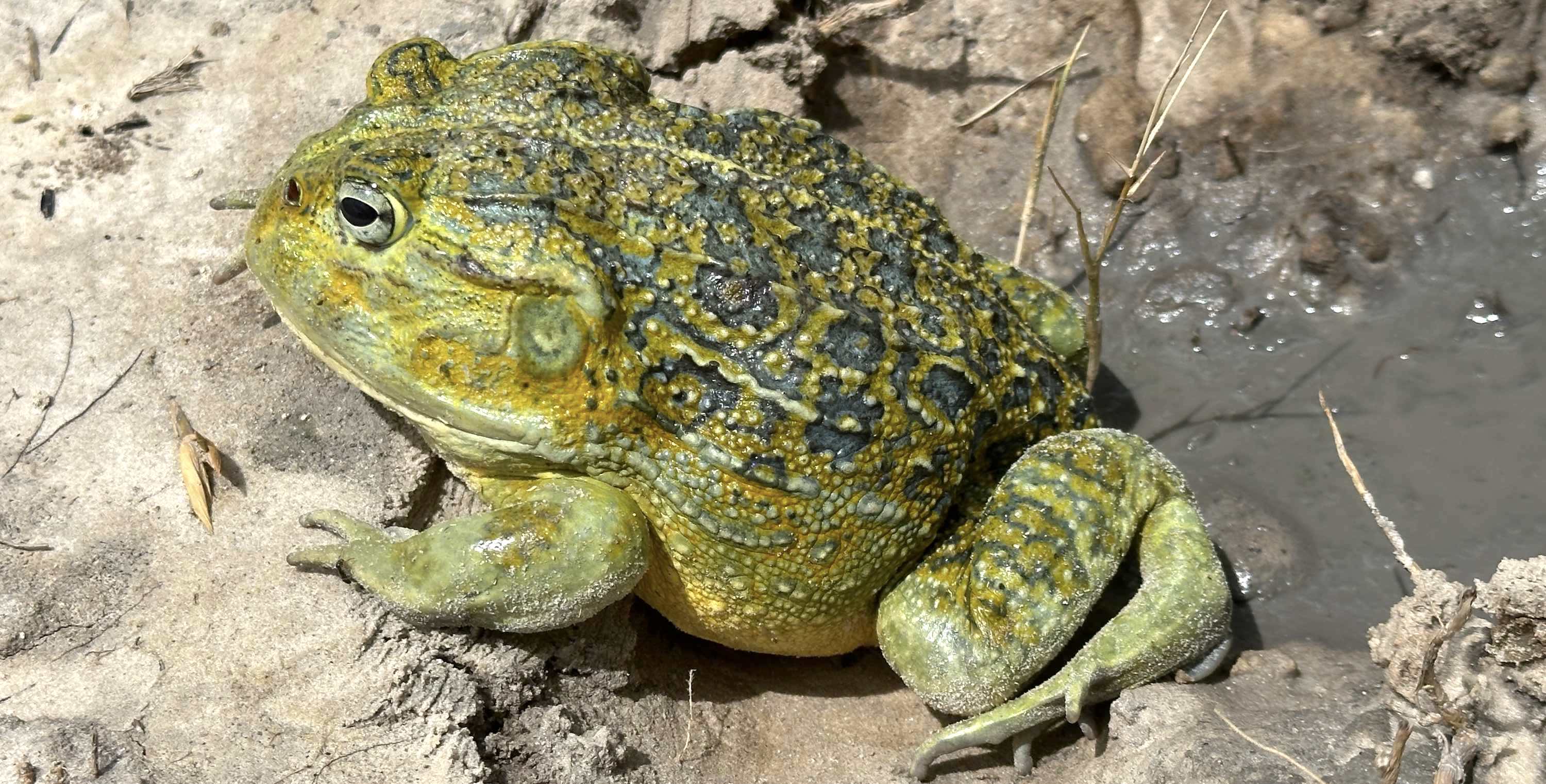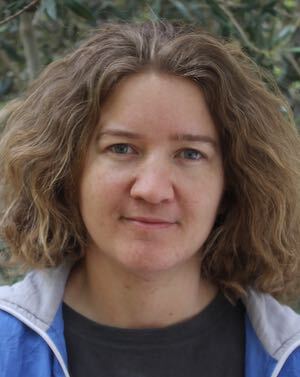
African bullfrogs are large and in charge, especially the males during mating season when they battle it out for mating rights in powerful, sometimes deadly, wrestling matches. It is therefore astonishing that an African bullfrog species has stayed under the scientific radar until March 2024. This is the biggest frog from anywhere in the world that has been described by scientists in the last 104 years!
While local people have no doubt caught and eaten these bullfrogs for hundreds of years, the extremely remote location of this bullfrog's preferred habitat has kept it from detailed scientific examination until now. The seasonal pans of Nyae Nyae Conservancy and Khaudum National Park where this bullfrog was found may be difficult for humans to reach even with a suitably kitted 4x4 vehicle, yet they provide immensely valuable habitat for hundreds of plant and animal species.
The ecological value of Khaudum is what led the late Ben Beytell to motivate and negotiate for its proclamation as a protected area, first as a Game Reserve in 1989 and then as a National Park in 2008. Ben was one of Namibia's foremost conservationists, with 35 years of distinguished service, ending his career as Director of Parks and Wildlife in the now Ministry of Environment, Forestry and Tourism (MEFT).
It was therefore fitting that the new bullfrog species occurring in Khaudum National Park was named Beytell's bullfrog (Pyxicephalus beytelli) in honour of this larger-than-life conservationist. What would make Ben Beytell even more proud is that his son Piet Beytell, who also works for MEFT, was part of the expedition team that found this new species.


Prof. Louis Du Preez of North West University in South Africa led the team that collected and studied the new bullfrog. He described what led up to this exciting find: When one of my former students, Marleen le Roux (now Marleen Byron), showed me a bullfrog specimen that she had collected from the Okavango Delta in 2010, I was intrigued. It looked different enough from the existing three species of African bullfrog to warrant classification as a new species, but we needed more specimens and tissue to be collected for a molecular study to confirm our suspicions.
An opportunity to find more of these bullfrogs presented itself in 2021 when Dr Francois Jacobs of the Ministry of Fisheries and Marine Resources (MFMR) invited Prof. Du Preez to conduct a frog and reptile survey in the Khaudum-Nyae Nyae ecosystem as part of a larger collaborative project between Dr Ed Netherlands from Free-State University, MFMR, MEFT, Dr Francois Becker and his team from the National Museum of Namibia and the Kwando Carnivore Project.
As suspected, the bullfrogs found in the Namibian pans were the same species as the specimen from the Okavango Delta in Botswana, but entirely different to the other known African bullfrogs. After the survey, the scientists published detailed measurements and descriptions of the bullfrogs they collected along with molecular data from tissue samples to show conclusively that Beytell's bullfrog is a new species to science.
Lise Hanssen of the Kwando Carnivore Project explained how this scientific survey fits into their broader project: The Khaudum-Nyae Nyae ecosystem is ecologically valuable in its own right, but when linked with neighbouring land in Botswana (northwestern Ngamiland) it provides an important corridor for lions, elephants and many other species moving within the broader Kavango-Zambezi Transfrontier Conservation Area.
Hanssen continued, with funding from the Oak Foundation, we have completed several ground and aerial surveys to determine what species are already in the area. Our longer-term plans are to increase the populations of some key species living in the ecosystem and reintroduce others that used to occur here.


Hanssen was thrilled by this new discovery, Finding Beytell's bullfrog has been the most exciting outcome of this project thus far! We cannot wait to uncover more of the secrets held by this remote wilderness and implement our plans to increase its conservation status and improve the livelihoods of the local San community.
The results of this survey and others like it are part of Namibia's application to declare the Nyae Nyae-Khaudum pans as the country's sixth Wetland of International Importance under the Ramsar Convention. It is hoped that this new status will attract further scientific and conservation interest leading to new funding opportunities to study and conserve this ecosystem. If declared, it will be the first Ramsar site in Namibia that includes communal land.
Beytell's bullfrog has hopped into the role of flagship species for this newly minted Ramsar site, while Prof. Du Preez pointed out that describing the species is just the first step in their research. While our molecular study confirms its status as a new species, we really need to do some follow up behavioural studies to get to know Beytell's bullfrog better. In particular, we would like to witness a breeding event when the bullfrogs come out of their long hibernation and start to call, fight and mate when the pans are full of water.
When Ben Beytell first explored what would later become Khaudum National Park and Nyae Nyae Conservancy he recognised the importance of this landscape and the culture of the Ju/'hoansi people living there. As he looked out over the pans during the height of the wet season, he may have seen and heard the bullfrogs duking it out during their brief mating frenzy. Little did he know that those powerful amphibians would one day bear his name.
If you enjoyed this page, then you might also like:



For articles on similar topics, please click one of the following options:

Gail C. Thomson is a carnivore conservationist who has worked in South Africa, Namibia and Botswana on human-carnivore conflict, community conservation and wildlife monitoring. She is interested in promoting clear public communication of science and conservation efforts in southern Africa.
Gail C. Thomson is a carnivore conservationist who has worked in South Africa, Namibia and Botswana on human-carnivore conflict, community conservation and wildlife monitoring. She is interested in promoting clear public communication of science and conservation efforts in southern Africa.
We use cookies to monitor site usage and to help improve it. See our Privacy Policy for details. By continuing to use the site, you acknowledge acceptance of our policy.